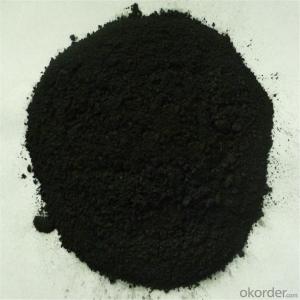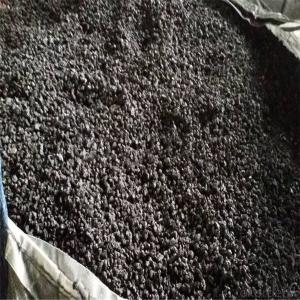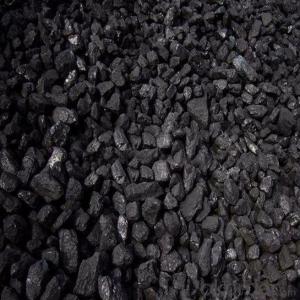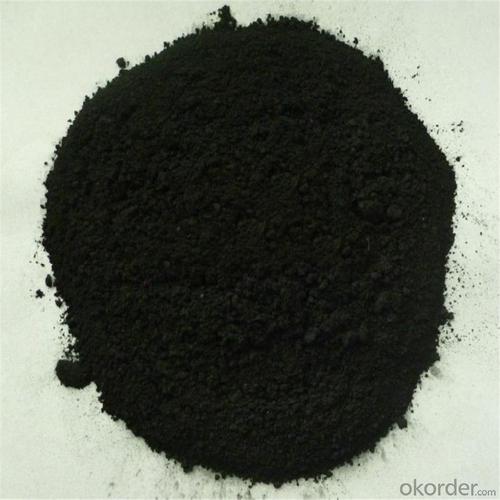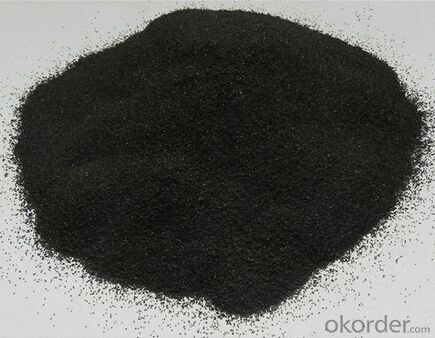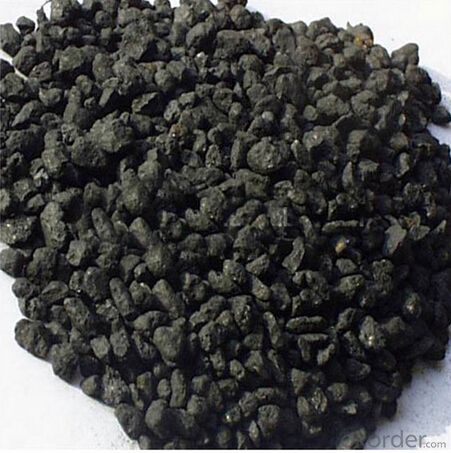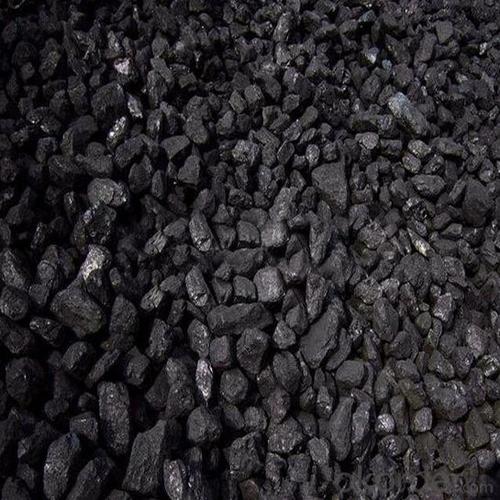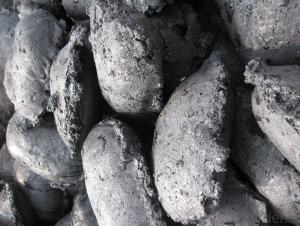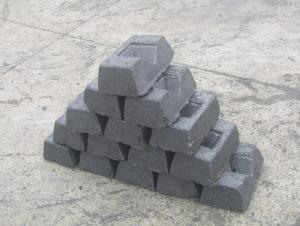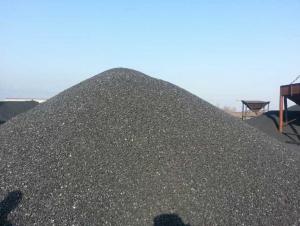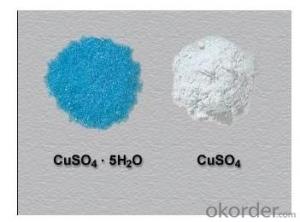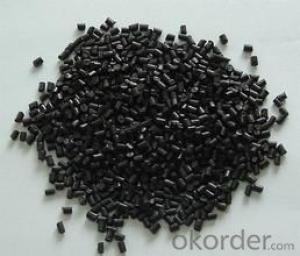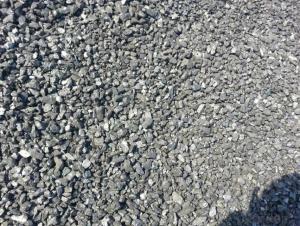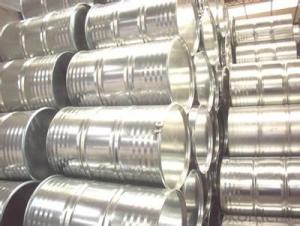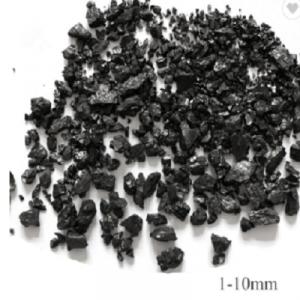Recarburizer 94% F.C Higher quality and Lower price
- Loading Port:
- Dalian
- Payment Terms:
- TT OR LC
- Min Order Qty:
- 10 m.t
- Supply Capability:
- 500000 m.t/month
OKorder Service Pledge
OKorder Financial Service
You Might Also Like
Specifications of graphite powder:
- 98%-99% graphite powder
- high fixed carbon
- low sulphur and nitrogen
- ten year experience in processing of graphite products
- Graphite powder / Graphite carburant
Graphite powder purposes:
- As non-metallic mineral resources, has important defense strategic role
- Can be used for high and new technical projects, is of great economic and social benefits
- Is the metallurgical industry refractory material
- Is the chemical industry all kinds of corrosion of vessels, general equipment of carbon products
- Light industry is in pencil, ink and the main raw material of artificial diamond
- Is the electrical industry production carbon electrode and electrode carbon rods, battery materials
Graphite powder data sheet:
Our carbon additive has the features of high carbon, low sulphur, nitrogen and harmful impurities. So it has been widely used for steel-smelting, casting, brake pedal and friction material. | |||||||
Data sheet | |||||||
Product No. | Fixed Carbon | Sulphur | Ash | Volatile Matter | Moisture | Particle Size | Nitrogen Content |
Min | Max | Max | Max | Max | 90% | Max | |
HY-CA-01 | 98.5% | 0.50% | 0.80% | 0.80% | 0.50% | 1-5MM | N/A |
HY-CA-02 | 99.00% | 0.30% | 0.50% | 0.50% | 0.50% | 1-5MM | 100PPM |
HY-CA-03 | 98.50% | 0.05% | 0.80% | 0.70% | 0.50% | 0.3-5MM | 300PPM |
HY-CA-04 | 95.00% | 0.30% | 3.50% | 1.50% | 0.50% | 1-4MM | 700PPM |
HY-CA-05 | 99.00% | 0.03% | 0.50% | 0.50% | 0.50% | 0.3-5MM | 300PPM |
HY-CA-06 | 80.00% | 0.10% | 16.50% | 3.50% | 2.00% | 1-5MM | N/A |
Remark:The above mentioned grain sizes are recommended standard, if your have special requirements, please feel free to contact us. | |||||||
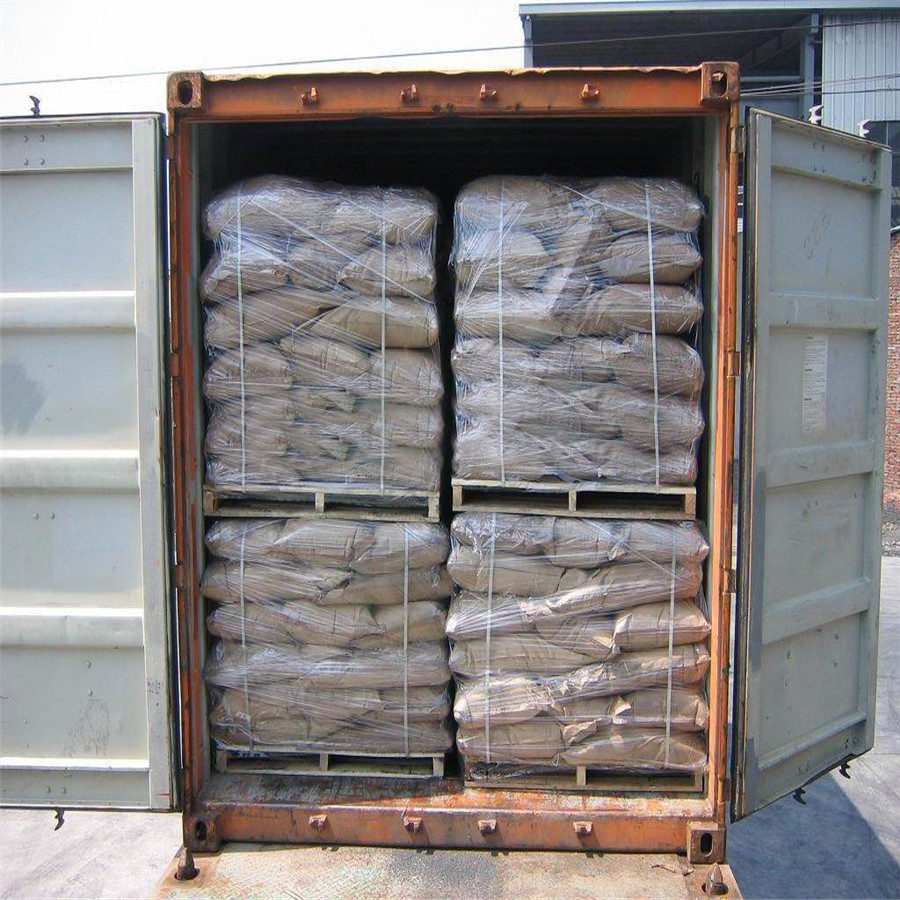
- Q: What is carbon offsetting in aviation?
- The aviation industry utilizes carbon offsetting as a mechanism to counterbalance the carbon emissions it generates. Since airplanes contribute significantly to greenhouse gas emissions, carbon offsetting offers a means for airlines and passengers to acknowledge their carbon footprint and contribute to the battle against climate change. The carbon offsetting process involves calculating the quantity of carbon dioxide and other greenhouse gases released during a flight, and subsequently investing in projects that decrease an equal amount of emissions elsewhere. These projects may encompass initiatives involving renewable energy, forest preservation, or methane capture. The objective is for the emissions reduced or eliminated by these projects to compensate for the emissions produced by the aviation industry. To partake in carbon offsetting, airlines or passengers can acquire carbon offsets, which essentially represent credits equivalent to the reduction or elimination of one metric ton of carbon dioxide or its equivalent. These offsets are generated by certified projects that adhere to stringent standards and undergo independent verification. By investing in carbon offsets, the aviation industry can contribute to global endeavors aimed at reducing greenhouse gas emissions and mitigating the impact of air travel on climate change. It enables airlines and passengers to promptly take action to counteract the environmental repercussions of flying, as the reduction or elimination of emissions from offset projects helps to balance out the emissions generated by air travel. It is crucial to note that carbon offsetting in aviation should not serve as a means to justify or neglect the necessity of long-term solutions to reduce emissions from aircraft. Instead, it should be regarded as a supplementary measure to other strategies, such as investing in more fuel-efficient aircraft, utilizing sustainable aviation fuels, and implementing operational improvements. Nonetheless, carbon offsetting does provide a valuable tool to mitigate emissions in the short term, while the aviation industry endeavors to adopt more sustainable practices.
- Q: What is the role of carbonation in carbonated drinks?
- The role of carbonation in carbonated drinks is to provide the refreshing and effervescent sensation that is characteristic of these beverages. Carbonation is the process of dissolving carbon dioxide gas into a liquid, typically water, under pressure. This results in the formation of carbonic acid, which adds a tangy flavor to the drink. Carbonation serves several purposes in carbonated drinks. Firstly, it enhances the taste by adding a unique bubbly sensation that stimulates the taste buds and gives a refreshing mouthfeel. The effervescence created by the carbonation also contributes to the overall sensory experience of the drink, making it more enjoyable to consume. Furthermore, carbonation acts as a natural preservative in carbonated drinks. The carbon dioxide gas inhibits the growth of bacteria and other microorganisms, thereby extending the shelf life of the beverage. This is particularly important for soft drinks that are often stored for extended periods before consumption. In addition to taste and preservation, carbonation plays a role in the presentation of carbonated drinks. The release of carbon dioxide gas from the liquid creates bubbles and fizz, making the drink visually appealing and enticing. This visual appeal is often associated with a feeling of luxury and indulgence. Overall, carbonation is an essential component of carbonated drinks, providing taste, preservation, and visual appeal. It enhances the sensory experience and contributes to the overall enjoyment of these beverages.
- Q: How are carbon compounds classified?
- Carbon compounds can be categorized according to the type and number of atoms bonded to carbon atoms. There are various types of carbon compounds, including hydrocarbons, alcohols, aldehydes, ketones, carboxylic acids, esters, ethers, amines, amides, and more. Hydrocarbons are carbon compounds solely consisting of carbon and hydrogen atoms. They can be further divided into two main groups: aliphatic hydrocarbons and aromatic hydrocarbons. Aliphatic hydrocarbons include alkanes, alkenes, and alkynes, which are classified based on the carbon-carbon bonds they possess. On the other hand, aromatic hydrocarbons have a ring structure and are known for their aromaticity. Alcohols are carbon compounds with a hydroxyl (-OH) group attached to a carbon atom. They are categorized based on the number of hydroxyl groups connected to the carbon atom. For instance, methanol is a monohydroxy alcohol, while ethylene glycol is a dihydroxy alcohol. Aldehydes and ketones are carbon compounds containing a carbonyl group (C=O). Aldehydes have the carbonyl group attached to a terminal carbon atom, whereas ketones have it attached to an internal carbon atom. Their names are determined by the number and position of the carbonyl group within the molecule. Carboxylic acids are carbon compounds with a carboxyl group (-COOH). They are named by replacing the -e ending of the corresponding hydrocarbon with -oic acid. For example, methane becomes methanoic acid. Esters are carbon compounds derived from the reaction between a carboxylic acid and an alcohol. They have the general formula RCOOR’, where R and R’ can represent any alkyl or aryl group. Often, they are named based on the alcohol and acid used in their formation. Ethers are carbon compounds in which an oxygen atom is bonded to two alkyl or aryl groups. Their names are formed by listing the alkyl or aryl groups in alphabetical order followed by the word "ether". Amines are carbon compounds with a nitrogen atom bonded to one or more alkyl or aryl groups. They are named by adding the suffix -amine to the name of the alkyl or aryl group attached to the nitrogen atom. Amides are carbon compounds with a carbonyl group (C=O) bonded to a nitrogen atom. They are named by replacing the -oic acid or -ic acid endings of the corresponding carboxylic acid with -amide. In summary, the classification of carbon compounds is based on their functional groups and the arrangement of atoms surrounding the carbon atom. These classifications aid in categorizing and studying the diverse range of carbon compounds found in nature and synthesized in laboratories.
- Q: How is activated carbon produced?
- Activated carbon is produced by heating carbon-rich materials, such as wood, coal, or coconut shells, at high temperatures in the absence of oxygen. This process, known as activation, creates a highly porous material with a large surface area, which gives activated carbon its adsorptive properties.
- Q: How can carbon capture and storage be implemented?
- Carbon capture and storage (CCS) is a technology that involves capturing carbon dioxide (CO2) emissions from industrial processes and storing them underground, preventing their release into the atmosphere. Implementing CCS involves several key steps. Firstly, the capture process involves capturing CO2 emissions from power plants, factories, and other industrial sources. This can be achieved through various methods, such as pre-combustion capture, post-combustion capture, and oxy-fuel combustion. Pre-combustion capture involves converting fossil fuels into a mixture of hydrogen and CO2, with the latter separated and stored. Post-combustion capture involves removing CO2 from the flue gases after combustion. Oxy-fuel combustion involves burning fossil fuels in pure oxygen, resulting in a flue gas that is mostly CO2. Once captured, the second step is transportation. The captured CO2 needs to be transported from the capture site to a storage site. This transportation can be done through pipelines, ships, or trucks, depending on the distance and volume of CO2. Pipelines are the most common method, especially for large-scale projects, as they are cost-effective and efficient. The third step is storage, which involves injecting the captured CO2 deep underground into geological formations for long-term storage. The most suitable storage sites are depleted oil and gas fields, saline aquifers, and deep coal seams. These sites have the capacity to securely store large amounts of CO2 for hundreds or even thousands of years. To ensure the safety and effectiveness of CCS, monitoring and verification play a crucial role. Continuous monitoring is required to detect any potential leaks or seismic activities that may compromise the integrity of the storage site. Verification activities involve assessing the long-term storage of CO2 and ensuring compliance with regulations and standards. Implementing CCS also requires policy support and financial incentives. Governments can provide regulatory frameworks, tax incentives, and funding to encourage the adoption of CCS technologies. International cooperation and collaboration are also important, as CCS can be a global solution to mitigate climate change. In conclusion, implementing carbon capture and storage involves capturing CO2 emissions, transporting them to a storage site, injecting them underground, and monitoring the storage process. It requires various technologies, infrastructure, and policy support to achieve widespread adoption. By effectively implementing CCS, we can significantly reduce greenhouse gas emissions and combat climate change.
- Q: Is aluminum alloy expensive or high carbon steel expensive?
- Aluminum must be expensive, carbon steel is rubbish
- Q: How does carbon affect the water cycle?
- Carbon affects the water cycle in several ways. Firstly, carbon plays a crucial role in the atmosphere, where it exists in the form of carbon dioxide (CO2). The concentration of CO2 in the atmosphere has been increasing due to human activities such as burning fossil fuels, deforestation, and industrial processes. This increase in carbon dioxide levels leads to global warming and climate change, which in turn affects the water cycle. One major impact of increased carbon dioxide is the alteration of precipitation patterns. Warmer temperatures caused by carbon emissions can lead to more evaporation from bodies of water, resulting in increased water vapor in the atmosphere. This extra moisture can then lead to more intense rainfall in some areas, causing floods, while other regions may experience droughts as evaporation rates exceed precipitation rates. These changes in precipitation patterns disrupt the balance of the water cycle, affecting the availability of water resources for both human and natural systems. Furthermore, carbon dioxide dissolved in water forms carbonic acid, which lowers the pH level of oceans and bodies of water, a process known as ocean acidification. This acidification can negatively impact marine life, including shellfish, corals, and other organisms that rely on calcium carbonate to build their shells or skeletons. As a result, the disruption of these species can have cascading effects through the food chain, ultimately impacting the entire ecosystem. Carbon also influences the melting of polar ice caps and glaciers. Rising global temperatures caused by increased carbon emissions accelerate the melting process. As the ice melts, it releases freshwater into the oceans, leading to a rise in sea levels. This rise in sea levels can have devastating consequences for coastal communities, increasing the risk of flooding and erosion. In summary, carbon emissions, primarily in the form of carbon dioxide, have a significant impact on the water cycle. They alter precipitation patterns, contribute to ocean acidification, and accelerate the melting of ice, all of which disrupt the delicate balance of the water cycle and have far-reaching consequences for ecosystems and communities around the world.
- Q: Is badminton all good as carbon or aluminum carbon? Does carbon fiber on the Internet mean total carbon?
- Of course, it's all carbon. It's OK. Good elasticity, toughness and strength. It's better than aluminum. Now the regular professional racket is all carbon fiber and high elastic carbon fiber, you go to the store to see the hang of the racket, you will know
- Q: How does carbon dioxide affect the formation of smog?
- Carbon dioxide (CO2) does not directly contribute to the formation of smog. Smog is primarily formed by the interaction of sunlight with other pollutants such as nitrogen oxides (NOx) and volatile organic compounds (VOCs). These pollutants are emitted from various sources including vehicles, industrial processes, and power plants. However, while carbon dioxide does not directly participate in smog formation, it does play a significant role in contributing to climate change. CO2 is a greenhouse gas, meaning it traps heat in the Earth's atmosphere and contributes to the warming of the planet. As the Earth warms, it can lead to changes in weather patterns, resulting in more stagnant air conditions that can exacerbate smog formation. Additionally, the burning of fossil fuels, which releases carbon dioxide, is a major source of air pollutants like NOx and VOCs. So while CO2 itself may not directly contribute to smog formation, the activities that release CO2 can indirectly contribute to smog by releasing other pollutants that are involved in its formation. Therefore, the impact of carbon dioxide on smog formation is indirect, primarily through its contribution to climate change and the release of other pollutants. Reducing carbon dioxide emissions and transitioning to cleaner energy sources can help mitigate climate change and indirectly reduce the factors that contribute to smog formation.
- Q: What's the difference between carbon steel pipes and stainless steel pipes and seamless steel tubes?
- Carbon steel pipe and stainless steel pipe with the material classification, and the seamless steel tube is shaped by divided categories.
Send your message to us
Recarburizer 94% F.C Higher quality and Lower price
- Loading Port:
- Dalian
- Payment Terms:
- TT OR LC
- Min Order Qty:
- 10 m.t
- Supply Capability:
- 500000 m.t/month
OKorder Service Pledge
OKorder Financial Service
Similar products
Hot products
Hot Searches
